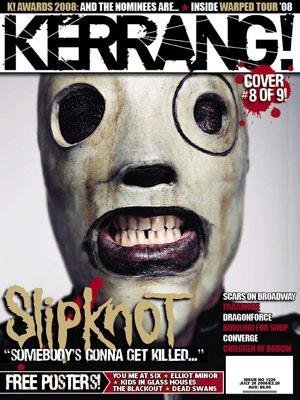
Vice is a free magazine and media conglomerate founded in Montreal, Quebec and currently based in New York City. The magazine covers contemporary indie and youth culture. Vice is known for its controversial content and often strikes a sardonic and ironic pose on debauchery, sex, drugs, violence, crime, and social issues involving race and economic class.
Vice is available in 19 countries. Editions are published in Canada, Austria, Australia, Belgium, Bulgaria, Brazil, Czech Republic, France, Germany, the Netherlands, Italy, Japan, Spain, Mexico, New Zealand, Scandinavia, the United Kingdom, South Africa and the United States. It is free and supports itself primarily through advertising. The current editor is Jesse Pearson in the U.S. and Andy Capper in the UK.
http:// en.wikipedia.org/wiki/Vice_(magazine)
I used to read Vice and thought that it would be good to use in my research because it is different from the mainstream magazines. I much prefer the Vice covers to the MOJO and NME covers, because it is much more minimalist and makes me want to hold on to the issues after i've read them, rather than something like NME which i'm much more likely to throw away or just cut up.
http:// www.viceland.com/uk/
The Vice website
is very important to the magazine, it features archives of back issues, a blog, a photo blog and allows interaction between the magazine and its readership.
Vice has also expanded its brand into other areas including;
Publishing
The magazine has published the collections The DOs and DON'Ts Book and The Vice Guide to Sex and Drugs and Rock and Roll. In 2008, The Vice Photo Book was released, a collection of the most powerful photography published in previous editions of Vice.
Clothing
Vice has created a retail clothing chain, Vice Retail. Vice also has strong ties with clothing line American Apparel, a frequent advertiser in Vice Magazine.
Record label
Vice Recordings has released albums and singles, mainly in the U.S. market, by The Black Lips, Bloc Party, King Khan and the Shrines, The Streets, The Raveonettes, 120 Days, Justice, The Stills, Death From Above 1979, Fucked Up, Chromeo and Charlotte Gainsbourg.
Television and film
VBS.tv is available for viewing on the internet, with the intention of circumventing network intervention over content issues and allowing for a global, free-of-charge distribution plan akin to that of the magazine. Vice Films released a feature length documentary, Heavy Metal in Baghdad, in 2008 as well its first theatrical release entitled White Lightnin' in 2009 and a documentary on professional bull riders entitled The Ride due out in 2010.
Venues
Vice also runs a pub and music venue in Shoreditch, East London, The Old Blue Last









